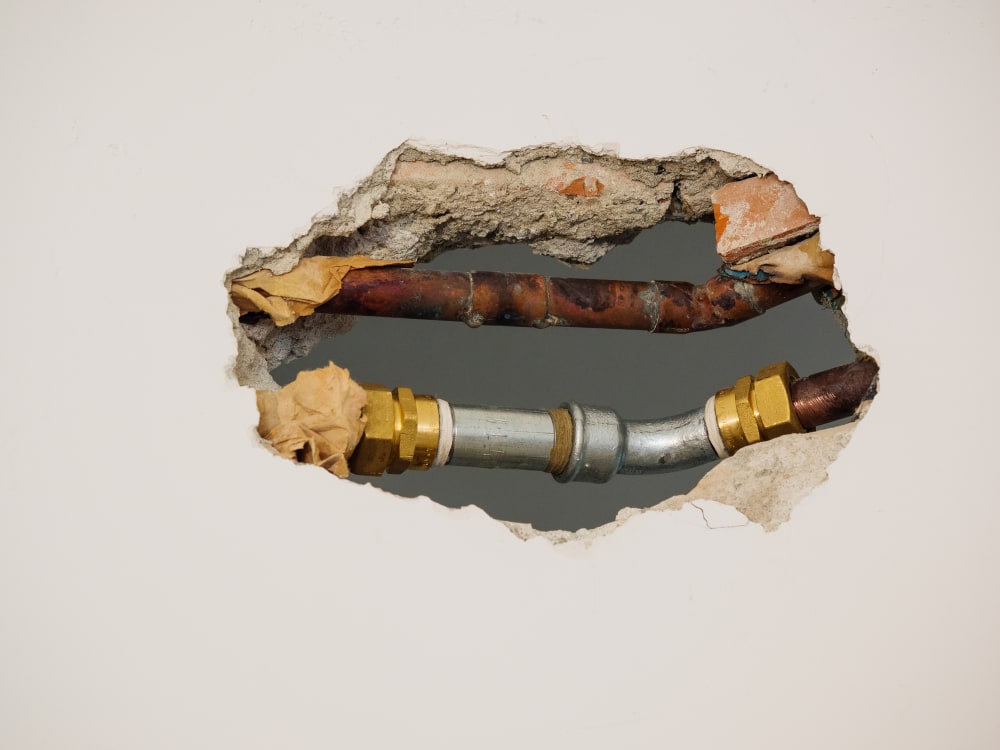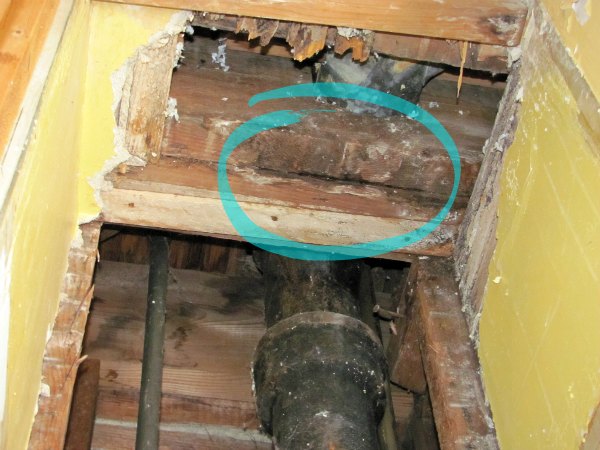Were you interested in content around Plumbing Issues in Older Properties and How to Fix Them?

Older homes commonly include charm, character, and history, yet they can likewise bring a host of pipes problems. Whether you're handling maturing pipelines, low water pressure, or leakages, recognizing how to resolve these typical troubles is vital to maintaining a secure and practical home. In this guide, we'll explore the common plumbing difficulties encountered by older homes and supply useful services to keep your plumbing in top form.
Understanding Usual Plumbing Issues
Aging Pipelines
Among the most usual issues in older homes is aging pipelines. Relying on the era in which your home was developed, the pipes might be made from materials that have degraded in time, such as galvanized steel, cast iron, and even lead. These materials can corrode, become brittle, or establish leaks, leading to water damage and prospective carcinogen.
Low Water Stress
If you're experiencing low tide stress, it could be because of natural resources, rust inside the pipelines, or old fixtures that are no longer operating efficiently. This can be a significant hassle, specifically in locations like showers and sinks.
Dripping Pipes
Leaks are another regular concern in older homes, typically brought on by rusty or worn-out pipes. Also small leaks can cause substantial water damages, mold development, and boosted water bills if not attended to promptly.
Out-of-date Components
Outdated pipes components such as taps, commodes, and showerheads not just look old but may also be much less reliable, vulnerable to leakages, or inappropriate with modern-day pipes criteria.
Pipeline Deterioration
Deterioration is an usual trouble in older pipes, particularly those made from galvanized steel or cast iron. Rusty pipelines can limit water circulation, trigger staining, and at some point bring about leaks or pipe bursts.
Evaluating the Condition of Your Plumbing
Inspecting Visible Pipelines
Begin by examining any type of visible pipes in your home, such as those in cellars, crawl spaces, or under sinks. Look for signs of corrosion, leaks, or corrosion, which can suggest underlying problems.
Checking for Leaks
Check for leakages by evaluating locations around faucets, toilets, and under sinks. You can also monitor your water meter prior to and after a duration of no water utilize to find concealed leaks.
Water Quality Testing
Older pipes can affect the top quality of your water. Conduct a water high quality test to look for impurities such as lead, corrosion, or various other pollutants that may be presented by maturing pipes.
Solutions for Common Pipes Issues
Changing Aging Pipelines
If your home has old, degrading pipes, consider replacing them with modern products like copper or PEX. This can be a substantial financial investment, yet it will certainly stop future concerns and enhance the safety and integrity of your plumbing system.
Fixing Low Tide Pressure
To fix low tide pressure, beginning by cleaning or changing old fixtures and getting rid of mineral build-up in the pipes. If the trouble continues, it may be essential to replace areas of rusty pipes.
Repairing and Changing Dripping Pipes
For tiny leaks, you can utilize pipeline clamps or epoxy putty as a short-lived repair. Nonetheless, it's finest to change leaking pipelines entirely to stay clear of more damage.
Upgrading Components
Upgrading old fixtures to modern-day, water-efficient models can boost your home's plumbing efficiency and reduce water intake. Search for components with the WaterSense tag for the best efficiency.
Managing Pipeline Corrosion
If your pipes are worn away, replacing them with corrosion-resistant products like copper, PVC, or PEX is the very best solution. Normal examinations and water high quality upkeep can help avoid additionally deterioration.
When to Call a Professional
While some plumbing problems can be handled with DIY options, there are times when it's finest to call an expert. If you're managing major leaks, substantial deterioration, or are uncertain concerning the condition of your pipelines, a qualified plumbing can give expert evaluation and repair service.
Preventive Upkeep Tips
Normal Inspections
On a regular basis evaluate your pipes system for indications of deterioration. Capturing concerns early can protect against costly repair services down the line.
Water Pressure Policy
Ensure your water pressure is within the recommended variety to avoid worrying your pipelines and components. A plumber can set up a pressure regulatory authority if needed.
Water Quality Upkeep
Set up water filters or softeners if your water quality is poor. This can protect your pipelines and components from damages triggered by hard water or pollutants.
Positive Pipe Replacement
If your home has very old pipelines, take into consideration aggressive substitute prior to significant concerns arise. This can save you from emergency repairs and water damage.
Conclusion
Managing pipes concerns in older homes calls for a mix of alertness, preventative upkeep, and timely upgrades. By recognizing the usual difficulties and understanding when to seek expert assistance, you can ensure your plumbing system continues to be functional and reliable for several years to find.
Common Plumbing Problems in Older Homes
Older homes have a ton of character from the antique brass faucets, clawfoot tubs, and colorful tile to the Dutch doors, transom windows, and archways, there s a lot to love. Unfortunately, that character often includes old plumbing that s past its prime and isn t fit to support modern appliances.
If you own an older home and are suspicious about strange noises (ghosts?), smells, leaks, or frequent clogs in your plumbing, it's possible that your home s old age is to blame.
Learn more about the most common old house plumbing problems, and what can be done to fix them!
What Are the Most Common Plumbing Problems in Old Houses?
Old, corroded piping. Most older pipes are made of material that corrodes and rusts more easily. Even if over the years some of that piping was replaced with better material, the rest may be damaged or repaired with lower-quality material. Though expensive, it may be the best option to re-pipe your plumbing especially if there s rust or lead in your water. Slow drains. This could be the result of many issues, but most likely because of pipe bellies. These are sags in your drainpipes that happen as your home settles and shifts downward over time, putting pressure on your pipes and creating negative slopes. This can restrict water from flowing correctly through them and result in slow drains. Frequent clogging. As you might expect, pipe bellies can also lead to frequent clogging. Another reason for clogging could be due to buildup over time, or blockages from sediment and root growth. Scheduling a drain inspection and drain unclogging service can eliminate this issue. Damaged or failing sewer lines. Old homes are more likely to have foundational shifts and tree root overgrowth. This can put a lot of pressure on and in your sewer lines, leading to damage. Another common reason for failed sewer lines is because of modern appliance upgrades. Newer appliances put more strain on sewer lines, and if your old pipes aren t equipped to handle this, it can result in damage. If you have any wastewater backup, slow drains, or soft spots in your yard, you may need sewer line replacement. Worn or outdated fixtures. Plumbing fixtures old or new aren t built to last forever. Even if your fixtures seem like they re working well, it s best to check the wear on any internal parts. Minor wear and tear over time can lead to more costly leaks and plumbing issues. Our experts can perform a plumbing inspection for any part of your home s plumbing. Improper installations or repairs. Whether your plumbing was installed a hundred years ago, installed incorrectly, repaired incorrectly, or repaired with outdated materials, this can affect the long-term stability of your plumbing. In older homes especially, having your plumbing inspected is vital to preventing damage. What Are Old Plumbing Pipes Made Of?
Galvanized steel. Most often used between the 1930s and the 1980s, this piping material was discovered later in the 1990s to be prone to rust and corrosion, releasing lead into the water, which is dangerous to consume. Copper. Most homes built around the 1960s are likely to have copper piping. Unlike galvanized steel, copper is one of the most durable materials for plumbing pipes. The issue with this material is the risk of lead, which could be present in the piping itself or the solder applied to the joints and fittings. PVC. This material is still used today and was often used in older homes where piping was replaced because it was easy and inexpensive to install. PVC is also very durable, lead-free, resistant to rust and corrosion, and handles high water pressure well. The downside is that hot water can make it warp. How to Fix Plumbing Problems in Old Homes
Have your plumbing inspected. Before you begin or schedule any type of repair, schedule a plumbing inspection. An expert will be able to properly identify all the issues in your plumbing and the best solution to avoid further damage. Get your plumbing repaired or replaced as needed. Depending on the issues found with your plumbing, you may need minor repairs or larger replacements. Make sure these issues are addressed before you tackle any smaller issues. Remove any clogs or buildup. It s likely your old pipes are clogged with debris, mineral buildup, hair, tree roots, and more. Having your drainpipes cleaned will improve overall drainage and help prevent future leaks. Replace old fixtures. Before replacing any fixtures, check with your local plumber first. Not only can new fixtures strain your old plumbing pipes, but installing them incorrectly can lead to costly damage.

I discovered that piece about Common Plumbing Problems in Older Homes when doing a search on the search engines. Sharing is nice. Who knows, you may very well be doing someone a favor. Thank you for your time invested reading it.
Book Appointment Now